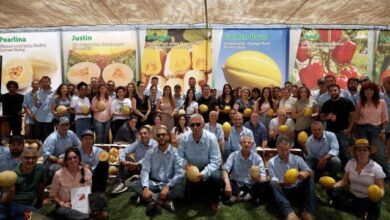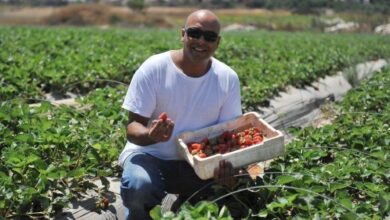Improving ‘Hass’ Avocado Pollination with Bumblebees Increases Yield
Adding BB to the avocado orchard doubled the number of pollen grain on the stigma which increased the fertilization process, fruit-set and yield.
Stern, R.A.1,2 raffi@migal.org.il and Sapir, G.1
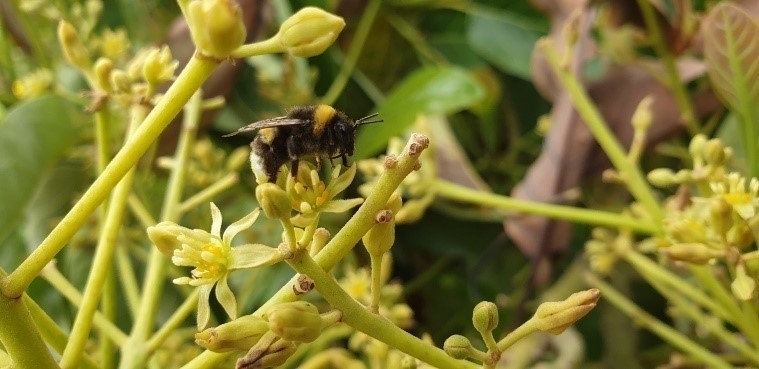
Inadequate pollination is a limiting factor in avocado fertility. The honeybee (Apis mellifera) [HB] is the only commercial pollinator of avocado in Israel, and hives are brought into all orchards during the flowering period. However, their efficiency is low, mainly due to their preference for citrus and wildflowers in the surrounding area. Moreover, avocado flowering often occurs during periods when the maximal daily temperature does not exceed 15°C, which is the HB’s activity threshold.
In comparison, the bumblebee (Bombus terrestris)[BB, Fig. 1]has many advantages: since it originates from the cooler climates of northern Europe, it works efficiently on the flowers of various fruit trees at temperatures below 15°C; it is larger and therefore carries a greater amount of pollen; it is faster and can visit more flowers at a given time; it collects mainly pollen grain, and only a very little amount of nectar, therefore it is much more efficient as a pollinator compared to the HB, moreover it is not sensitive to the smell of the avocado nectar which repels the HB from the avocado flowers, especially the ‘Hass’ flowers.

Figure 1. Bumblebee (BB) on a ‘Hass’ avocado flower
In experiments we conducted in the past few years on apple and pear trees, we found that using BBs in the orchards in addition to HBs, significantly improved pollination and increased yields. Even in litchi, which is very attractive to HBs, we managed to improve cross-pollination and increase yields.
The aim of this research was to examine whether adding BBs (10 hives/ha) to conventional HB hives (5 hives/ha) can increase ‘Hass’ avocado yields by increasing pollination rates.
In the first experiment we performed in 2017/18 in an avocado orchard comprising four consecutive rows of ‘Hass’ and one row of ‘Ettinger’ (20%), we found a considerable yield increase in ‘Hass’ avocados, mainly in the rows up to 80 m from the BB hives (Fig. 2).
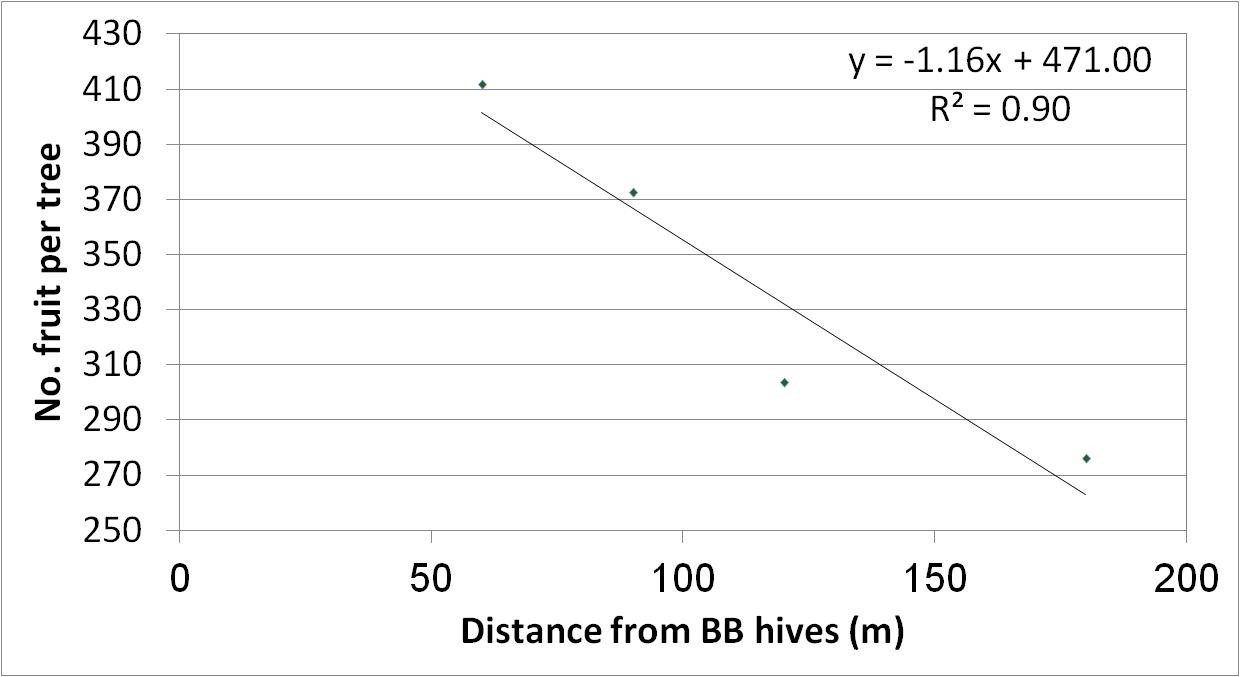 Figure 2. The relationship between row distance from the BB hives and the number of fruits per ‘Hass’ trees, Kfar Giladi, 2017/2018. Each data point is an average of five trees.
Figure 2. The relationship between row distance from the BB hives and the number of fruits per ‘Hass’ trees, Kfar Giladi, 2017/2018. Each data point is an average of five trees.
In the second year (2018/19), the trials were extended to three additional orchards in various environments, and again, a significant yield increase was attained in the trees tested: from 50-65 kg/tree (20-23 ton/ha) to 76-108 kg/tree (30-42 ton/ha). Examination of pollination rates and the number of germinating pollen grains per stigma at varying distances from the hives (Fig. 3) indicated a negative gradient of pollen grain per stigma, in correlation to the negative gradient in yield (Table 1). In the third and 4th year (2019/2020+2020/2021), this idea was tested throughout the country, from north to south, and the results were the same. The results from Kfar Hanassi orchard are presented in Table 2.
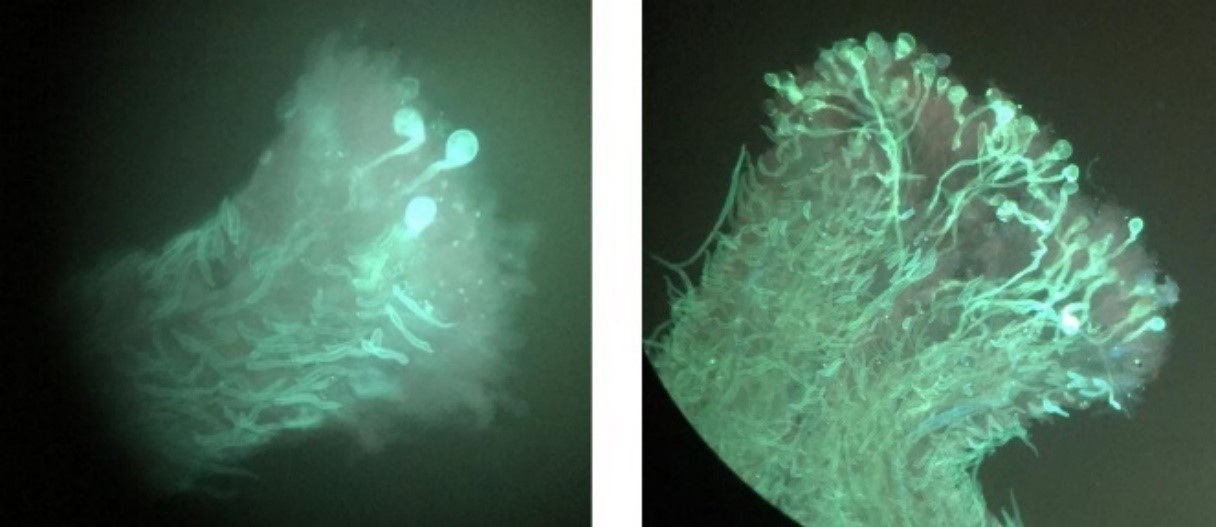 Fig. 3. Germination of pollen grains on the stigma on Hass avocado flowers.
Fig. 3. Germination of pollen grains on the stigma on Hass avocado flowers.
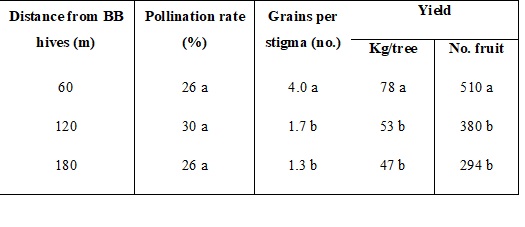
Table 1. Pollination rate, number of pollen grains per stigma of ‘Hass’ flowers and yield at Kfar Giladi, 2018/2019.
Results in a column followed by different letters differ significantly according to Duncan’s new multiple range test, P<0.05. Data of pollination rate and no. of grains per stigma are means of 100 flowers (20 flowers per tree x 5 trees) for each distance.
Data of yield are means of eight ‘Hass’ trees at each distance.
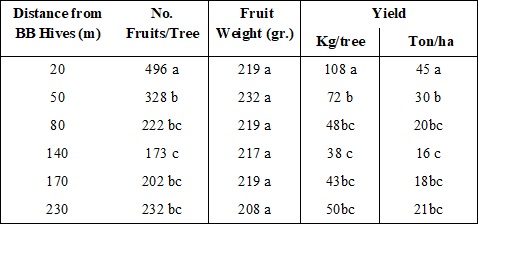
Table 2. Effect of adding BB hives (April 2018) on the number of fruits per tree, fruit weight and total yield (February 2019) at sixdistances from the BB hives,Kfar Hanassi, 2018/19.
Results within a column followed by different letters differ significantly according to Duncan’s new multiple range test, P>0.05. Data are the means of eight ‘Hass’ trees at each distance.
In summary, it seems that the very low number of pollen grain on the stigma is one of the limiting factors of fertilization. Adding BB to the avocado orchard doubled the number of pollen grain on the stigma which increased the fertilization process, fruit-set and yield.
1. MIGAL – Galilee Research Institute, P.O. Box 831, Kiryat Shmona 11016, Israel
2. Department of Biotechnology, Faculty of Life Sciences, Tel-Hai College, Upper Galilee 12210, Israel



